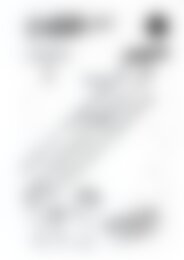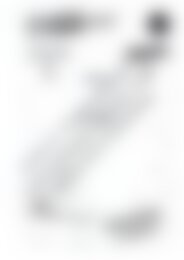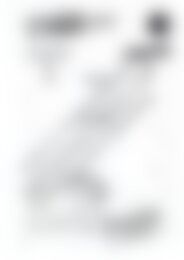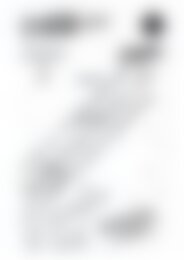RIC-6277 I can dance the Barramundi
Create successful ePaper yourself
Turn your PDF publications into a flip-book with our unique Google optimized e-Paper software.
DUGITE<br />
Preparation<br />
• Collect pictures of dugites.<br />
• If possible, an old snake skin could be brought in to show <strong>the</strong> students during <strong>the</strong> discussion.<br />
Presentation<br />
• Share and discuss <strong>the</strong> dugite pictures with<br />
<strong>the</strong> students.<br />
• Say <strong>the</strong> rhyme with <strong>the</strong> actions for <strong>the</strong><br />
students.<br />
• Discuss facts about snakes. Stimulus<br />
questions may include <strong>the</strong> following:<br />
– Why does a snake shed its skin? (A<br />
snake’s skin does not grow with its body<br />
so as <strong>the</strong> snake grows bigger, it has to<br />
keep shedding its skin. Also, when a<br />
snake has grown up and glides on its<br />
belly, <strong>the</strong> skin underneath begins to wear<br />
out, so it regularly sheds its skin and<br />
grows a new one.)<br />
– How does a snake shed its skin? (The<br />
snake rubs its nose on a rock or branch<br />
and sheds its skin head first, like peeling<br />
a banana.)<br />
Additional activities/information<br />
• A dugite has a small head and a slender<br />
body and grows up to 1.85 metres. On top,<br />
it is greenish-brown speckled with black<br />
scales. Underneath, it is a creamish-grey<br />
colour. Dugites are found in south-western<br />
Australia in sandy places where house mice<br />
are plentiful. House mice are <strong>the</strong> dugite’s<br />
favourite tucker. Dugites also eat birds,<br />
reptiles, small mammals and amphibians.<br />
In spring, <strong>the</strong> female lays up to 20 eggs in a<br />
hole in <strong>the</strong> ground. The young hatch in late<br />
summer and are left by <strong>the</strong>ir mo<strong>the</strong>r to fend<br />
for <strong>the</strong>mselves. Dugites are alert, quickmoving<br />
snakes and are very aggressive if<br />
approached. The dugite is one of Australia’s<br />
deadliest snakes.<br />
– Where does a snake shed its skin? (The<br />
snake sheds its skin in secret places<br />
around tree branches and in shrubs.)<br />
– What does an old snake skin look like?<br />
(It looks like a long, thin, empty sausage<br />
made from tissue paper. It is very pale,<br />
but <strong>the</strong> pattern of <strong>the</strong> scales <strong>can</strong> be<br />
seen.)<br />
– What do you know about dugites?<br />
– Do you know <strong>the</strong> names of o<strong>the</strong>r<br />
Australian snakes?<br />
• Say <strong>the</strong> rhyme with <strong>the</strong> actions again for <strong>the</strong><br />
students.<br />
• The students clap <strong>the</strong> beat while saying <strong>the</strong><br />
rhyme.<br />
• The students say <strong>the</strong> rhyme with <strong>the</strong> actions.<br />
• Share <strong>the</strong> following rhyme about dugites<br />
with <strong>the</strong> students. The students <strong>can</strong> listen for<br />
<strong>the</strong> rhyming words.<br />
©R.I.C. Publications<br />
Low Resolution Images<br />
Display Copy<br />
LITTLE DUGITE<br />
My dugite life in <strong>the</strong> bush all day<br />
Is far from a happy one.<br />
Sli<strong>the</strong>ring around on <strong>the</strong> ground I fi nd<br />
Is terribly rough on my tum.<br />
And I’m always alone without any friends<br />
And it isn’t a lot of fun.<br />
What I really want is to be with my mum<br />
On a lovely hot rock in <strong>the</strong> sun.<br />
I <strong>can</strong> <strong>dance</strong> <strong>the</strong> barramundi 12<br />
R.I.C. Publications ® www.ricgroup.com.au<br />
ISBN 978-1-74126-424-1

















